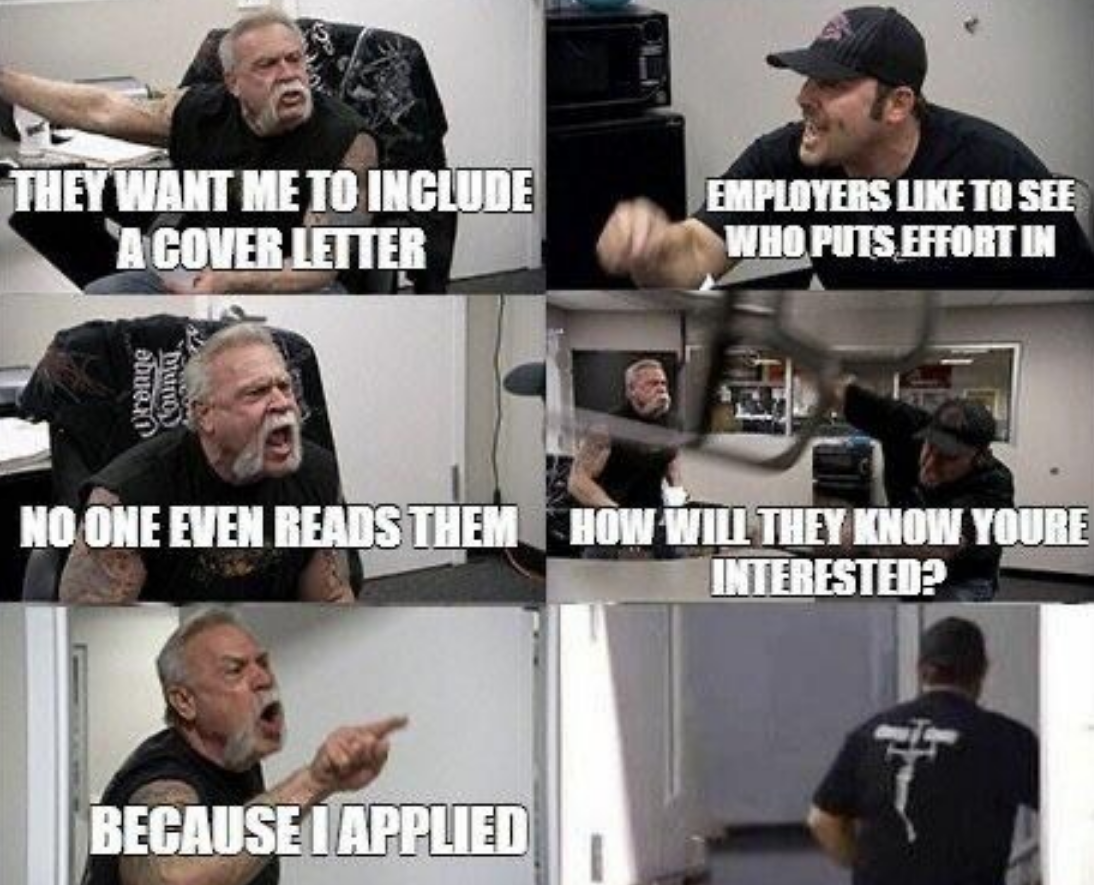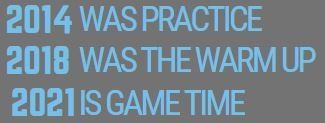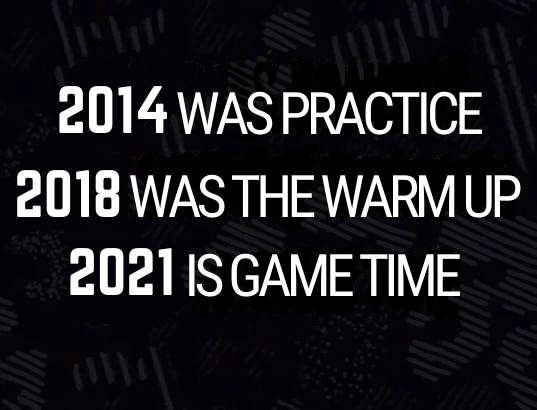Insights
3X Partners

The Big-Bet Recruiting Trends at the Top 10 Companies It’s a dream of every recruiting executive to accurately predict the future direction of talent acquisition. Unfortunately, current recruiting-trends surveys (like LinkedIn’s annual Global Talent Trends report) can only reveal what the average firm is planning (because they are filled out by hundreds of average recruiters). You don’t have to be a rocket scientist to realize that you would get a much more accurate and advanced picture of the future of TA if you knew the areas in which the top 10 elite companies (like Amazon, Salesforce, Facebook, and Alphabet) are currently making “big bet” investments. If you knew their future direction, following their lead would make a lot of sense because these firms have such tremendous resources to invest in forecasting. You can safely assume that their directions will be more accurate than the assumptions made on your meager budget. In addition, knowing the TA investment areas of industry leaders will make it easier to remain competitive with them. Fortunately, the authors of this article had the opportunity to survey the top 10 companies on LinkedIn’s Top Companies Where the US Wants to Work Now list. Why the First Recruiting Big-Bets Survey of Elite Firms Was Created After discovering the value of knowing where the vanguard of top firms was headed, we created what we eventually called “The Big Bets in Recruiting Survey” because it revealed the talent acquisition areas where the top firms were investing. The survey went further and also revealed in which investment areas the top firms expected to have the highest business impacts. The key to getting an amazing 90% participation rate was promising each of the firms that their individual results would be kept anonymous. Knowing what the other top 10 firms were planning allowed individual firms in the group to understand where they stood compared to other elite companies. A Snapshot Picture of the Results The survey of the top ten elite firms revealed that at least one of the firms was investing in the following 10 areas. The big-bet investment areas listed below are ranked in descending order, with those with the highest expected business impacts appearing first. Shifting to data-driven recruiting Business-impact recruiting The application of AI/machine learning Other technology applications beyond AI Pipeline continuous recruiting Targeted and diversity hiring Recruitment marketing Collaborative recruiting Competitive-advantage employer branding Flexible/fluid workforce Big-Bets Areas That Received at Least One No. 1 Ranking Data-Driven . It received the No. 1 rank from three different firms. AI/Machine Learning. It received the No. 1 rank from two different firms. Business-Impact Recruiting, Collaborative Recruiting, Recruitment Marketing, and Pipeline Continuous Recruiting. All received a No. 1 ranking from a single firm. **3XP does all of these activities & and has invested heavily in technology to deliver at scale** The Weighted Votes in Each Big-Bet Area

Heads up: you are probably unwittingly damaging your firm’s hiring results. Slow hiring during periods of record low employment means that top candidates will be gone long before you make an offer. In fact, a CareerBuilder 2012 survey revealed that even when the unemployment rate was double what it is today, a full 22 percent of offered candidates were lost because the firm “didn’t offer the position quickly enough and the candidate was already hired somewhere else.” And because of the bird-in-the-hand principal, during this current extremely overheated job market, I estimate that some firms are losing a majority of their top candidates in highly competitive positions to other quicker-acting firms that have adopted an expedited hiring process known as “same-day hiring.” If you think same-day hiring is not possible, realize that college grads, interns, and most temps are now already hired in a single day. How Slow Hiring During Low Unemployment Times Will Hurt You Low unemployment dramatically impacts hiring results because the competition or bidding for talent is so stiff. Top candidates don’t just receive multiple offers, but they receive multiple compelling offers. And with so many great options, few top candidates are willing to wait for the 23.8 days that it takes most U.S. firms to complete their interviews ( Glassdoor survey ) or the 42 days it takes to make a hire (SHRM survey). A Robert Half “timing is everything” survey revealed that when faced with a lengthy hiring process, nearly 6 out of 10 (57 percent) candidates will pursue other roles or stay put in their current job. And this multimillion-dollar loss is why many hospitals and high-tech firms have shifted to some variation of what is known as a “same-day hiring process.” Here’s an example, “A lot of times we’ll bring people in, and they get same-day offers. We’ve had to do it … recruiting keeps me up at night” (Sherry Whiteley VP at it Intuit). The old axiom of hiring slow to get quality has now been replaced … because top candidates will be quickly off the market, quality hires now result from matching the interview and the offer speed of your best talent competitors. There Are Four Variations of Same-Day Hiring Depending on your firm’s needs and capabilities, there are four variations of the same-day approach to consider. Same-day hiring — this is the most aggressive of all of the variations. It begins by scheduling all finalists for an all-day assessment (all candidates come in on the same day). After the assessments are completed, an offer is made to the best candidate at the end of the day. But under this variation, the finalist is encouraged or incented (with an exploding bonus) to accept the offer before they leave the building. If getting every candidate in a new single day is a problem, consider “same-week hiring” where all finalists know that the decision will be made before the end of the week. Same-day offers — the Robert Half survey revealed that nearly six in ten candidates “find the most frustrating part of the job search is the long wait after an interview to hear if they got the job.” So, under this variation once again all interviews are scheduled on a single day but at the end of the day an offer is made to the best candidate, and the others are told their ranking. Then the offered candidate is allowed to wait several days before making their final decision. Same-day interviews — this same-day interview approach is the easiest to implement. Under it, you merely schedule all of the interviews (for all of your finalist’s candidates) on the same day, so that all of your candidate assessment is completed during one day. Having all interviews on a single day also makes it much easier to compare candidates side by side. Under this approach, the actual candidate selection decision may occur as many as several days later. A shorter variation is “same evening interviews,” where the assessment is squeezed into a single work night evening. A national hiring day — this increasingly popular approach publicizes the fact that the firm is hiring thousands of employees on a single day. It is effective because it garners a great deal of free publicity and a buzz about working at the firm. It also adds value because hiring managers only need to focus on hiring for a single day. 6 Critical Design Features of an Effective Same-Day Hiring Process You may be worried that same-day hiring may result in fast but inaccurate hiring decisions. The accuracy of any same-day hiring process will be increased dramatically if you include one or more of these six key critical success factor components. Use a hiring committee — the most important quality improvement component by far is to use a hiring committee to make the same-day hiring decision. This is because many individual managers hire infrequently, and that makes them prone to mistakes. Firms like Google and Intuit have found that a formal hiring committee with a structured process is clearly superior. The hiring committee approach is more consistent, and it’s easier to monitor. It also makes more accurate one-day decisions because it is staffed with trained professionals who have proven to have reduced biases and an eye for talent. And because of their volume of hiring, members are much more up-to-date with the talent marketplace and with what it takes to sell a hard-to-land candidate. During times of low unemployment, a much smaller percentage of candidates will be easy to sell active jobseekers. So overall the importance of having a great selling capability becomes paramount. Developing a talent pipeline provides more time for assessment — the second component that improves results is a talent pipeline where you identify quality prospects before you have an immediate opening. This “pre-need” feature provides you with enough lead time so that you can slowly assess and check the references of top prospects from a distance. Stretching out the assessment time also allows you to narrow down the areas that you need to assess on interview day. Rely on “I know them well” referrals for an extra level of assessment — the next important feature is to rely primarily on referrals from your top-performing employees. Make an effort to populate your same-day referrals from top employees. This is effective because if a top employee has already seen their work and assessed and recommended a same-day candidate, this added layer of screening will dramatically reduce your error rate. Give them real problems — because candidates are there all day. You can supplement standard structured interviews with more predictive actual problem-solving assessments like whiteboard tests. Determine the jobs and the candidates where speed matters the most — it’s not necessary to use same-day hiring for jobs that are easy to fill or for candidates who are not in high demand. So, instead, it makes sense to focus same-day hiring where speed really makes a difference. So, periodically, call top candidates in each of your key job families to determine how many days on average that they remain active in the job market. When that “still available” time for the best candidates dips below 10 days, same-day hiring becomes essential. Also, hold peer interviews — because you have all day to assess the candidate, add a peer interview to the mix. That is because potential coworkers are more likely to accurately identify potential toxic employees. The Top 10 Benefits of Same-Day Hiring If you or your superiors need to be convinced about the value of one-day hiring, here is a quick summary of the many benefits that result from using this approach. You will land a higher percentage of top performers — this is the highest value of all benefits. There is simply no public data that shows that a longer time to fill has a positive impact on hire quality. And to the contrary, one study showed that the top 10 percent are gone within 10 days. With speed, you will hire more top performers, technologists, and innovators who simply wouldn’t still be available if you waited the traditional average 42 days. And additionally, if you force candidates to make an acceptance decision quickly, you will also end up hiring decisive employees. Improved offer acceptance rates — because nearly one-third in the Robert Half survey said, “a protracted hiring process makes them question the organization’s ability to make other decisions” (when they become an employee). As a result, fast decision-making improves your image and in turn offer acceptance rates. In addition, giving candidates lots of time to think about whether they want to work for your firm may actually raise doubts and questions. Because the selection process lasts all day, the candidate also gets more time to know and like your team. And finally, the advanced selling ability of your hiring team will also help improve offer acceptance rates. Less lost productivity due to fewer vacant position days — filling the job faster means fewer expensive “position vacancy days” where no work is getting done. Filling positions quickly will also lessen the burden on an overworked team that is now being forced to fill in. Reduce your candidate dropout rate — there is nothing more frustrating than having a top candidate field interest and then apply. But after this initial success, you lose them because your interviewing and hiring process takes too long. Tell candidates upfront that you will make a decision in a single day, and this will excite candidates and keep them from dropping out. You can also mandate “Interview Fridays” in order to ensure that everyone is available for candidate meetings during the interview Same-day hiring impresses both top candidates and hiring managers — same-day hiring impresses top candidates with your ability to make fast decisions. Quick hiring also impresses hiring managers because they get better quality talent much faster, and because it’s over quickly, they can quickly get back to their normal work. Stop your best-yielded candidates from applying for additional jobs — simply knowing that a decision will be made quickly would prohibit many from continuing to apply for more jobs. Not applying for additional jobs will effectively decrease your competition. You can reduce the chance that a candidate will stay in their current job — the previously cited Robert Half survey revealed that a lengthy hiring process would cause nearly 1 out of 5 candidates “to stay put in their current job.” Because most in-demand candidates are currently employed, they are likely to get a counteroffer from their current boss. However, getting them to say yes on interview day before they leave your facility can dramatically reduce the chance of them even receiving a counter offer from the current boss. It provides a competitive advantage — because the average time to fill is 42 days. Concluding interviews and making offers quickly provide your firm with a significant competitive advantage over other talent competitors. In this case, “the early bird catches the worm” analogy is true. It will improve your external brand image — candidates themselves want the — often painful — hiring process to be over quickly. And when it takes too long in their view, they are likely to post that complaint on external sites like Glassdoor. And the praise that you receive by reducing interview and hiring time may build your employer brand image and help you attract more candidates. Recruiters also like the approach — a long, drawn-out hiring process requires a lot of recruiter time. So, nothing makes a recruiter happier then closing one of their requisitions in a single day. Recruiters usually also prefer hiring committees because they are more objective and straightforward. Incidentally, recruiting must develop continuous improvement metrics to assess the effectiveness of the same-day process. You hire fast for one primary reason, to get quality hires. Extended delays will cause you to lose top quality candidates to other firms, and that will reduce your overall quality of hire. F inal Thoughts Historically, most managers have thought that slow hiring is best. However, during periods of extremely low unemployment, the opposite is even less true. The intense competition for talent simply means that the best won’t wait around for you to make a slow hiring decision. To put it simply, when the competition for top candidates increases, your time to interview and time to fill must become shorter and move in the opposite direction. You don’t need to use an expedited process for every job. But for those jobs where top candidates are gone within a week, you really have no choice. Author’s Note: If this article stimulated your thinking and provided you with actionable tips, please take a minute to follow and/or connect with Dr. Sullivan on LinkedIn .

Few realize that increasing your hiring speed often has the second-largest impact on hiring results (after referral hires). Most track time to fill, but few recruiting leaders calculate the high correlation between your hiring speed for top talent and their resulting on-the-job performance after they become a new hire. To put the relationship simply, slow hiring decisions mean that most of your top applicants will lose interest or accept a faster “bird in hand” offer long before your firm gets around to a decision. And that slowness means that you’ll have to select from the remaining “not-in-demand candidates” which unavoidably, will result in a large number of mediocre hires. Time to fill now averages 44 calendar days, an increase of 50 percent since 2010 (Source: CEB). So, if your executives aren’t sold on the need for faster hiring, show them this 20+ list of the severe and real damage that occurs when you hire slower than your talent competitors do. The most impactful damages are listed first under each category. If you want to know even more about proven actions that you can take to speed up your hiring, please join me at the workshop that I am leading on that topic at the Fall ERE recruiting conference. The Economic Costs of Slow Hiring The most compelling reasons for speeding up your hiring process are based on the tremendous cost associated with losing top candidates because your hiring process is too slow. The most significant economic costs are highlighted below. Lower-quality hires — because top candidates may be gone within 10 days. Slow hiring guarantees you will hire weaker performers, who are of course the only ones still available after 30+ days. If these lower-quality hires stay for years, you must add the cost of these multiple years of lower performance to your total cost of slow hiring. Direct revenue loss — the most obvious cost will be the un-retrievable revenue lost due to long position vacancies in revenue-generating positions. Not only will position vacancies in sales jobs cost you revenue, but may also cause you to lose customers. Lower productivity — you lose the opportunity to get work done when a position is vacant for even a single day. Having multiple vacancies as a result of slow hiring will dramatically impact the productivity in individual jobs and throughout the whole team. Loss of innovators — because most firms target innovators and machine-learning professionals, they are gone the fastest. Slow hiring will mean that you will experience permanent talent shortages in these critical areas. Losing talent to a competitor — because slow hiring may cause “in-demand” top talent to accept offers from your competitors. You have to include the costs of losing talent to your competitors because it helps their bottom line. Track (on LinkedIn) where your lost top candidates ended up to find out if your competitors benefited from your slow hiring. Losing a competitive advantage — even though the average time to fill is 44 days, using a pipeline hiring approach lowered Nestlé Purina’s time to fill to zero days in 43 percent of its hires. At one of its factories, 100 percent of the jobs were filled before they were needed. Speed gives all fast hiring firms a distinct competitive advantage, which is essential when you are fighting for talent. Speed hiring results in millions of dollars of economic impacts to your firm because it allows you to get much more than your fair share of top talent. A bad experience may cost you product sales — a long, drawn-out hiring process certainly degrades the candidate experience and that may lead to two-thirds of your rejected candidates disparaging your firm on social media. If poorly treated candidates are current customers, a bad experience can result in up to 15 percent of them becoming former customers. Co-worker stress — teammates must work harder to fill in when positions on their team are vacant. The stress and overwork may also result in more errors, lower quality output, and possible turnover. Higher salary demands — the longer a top candidate is in the job market, there is a higher likelihood that they will demand more money and be more expensive because multiple firms will be bidding on them. However, if you hire quickly when a top candidate has only applied at your firm, you won’t have to offer them higher salaries, because there has been no competitive bidding yet. Negative Candidate Issues Created by Slow Hiring Obviously, candidates want a fast hiring decision, so slow hiring will negatively impact how they act. More will drop out — when there are slow hiring decisions, your in-demand candidates will have abundant time to rethink whether they want to work at your firm, which increases the chances that they may drop out of the hiring process before your firm begins interviews. They may also drop out because they get “bird-in-hand” offers from other firms or because they simply need the income immediately. Intuit now, frequently, provides same-day offers to minimize the loss of top candidates who simply won’t be available if there is even a minimal delay. They will continue to apply elsewhere — slow hiring creates major problems because it provides applicants with more time to keep applying to other firms, and increasing their frustration will cause them to lose interest in your firm. In contrast, telling them that the decision will be made quickly (name the approximate number of days) may discourage further applications to other firms. Lower offer acceptance rates — innovators and candidates routinely view their experience with the recruiting process as a reflection of how the firm operates. So, they may assume that slow hiring decisions are an indication of how fast the rest of the firm makes decisions. That discouraging thought will make them more likely to drop out or reject your offer. Fast hiring and keeping top candidates interested up until the end will likely increase your offer acceptance rates. They may never reapply — because slow hiring will frustrate rejected candidates. That frustration increases the odds that they will never reapply to your firm. Damage to Your Employer Brand Image and Future Applications Your organization’s slowness will negatively impact your employer brand and the possibility of future applications. Frustration results in spreading negative comments — a drawn-out hiring process gives current applicants ample time to spread the word about their frustrations to their friends and colleagues. Discourage applications — after the hiring process is over, frustrated candidates will post negative reviews on Glassdoor (which allows negative comments related to slow recruiting) and that will discourage many of the people who are considering your firm to reconsider making an application. It may cause you to receive lower rankings — because a bad candidate experience is part of the criteria for ranking “best place to work” firms, slow hiring may negatively impact your ranking on these important lists. Slow Hiring May Result in Bad Decision-making Slow hiring may have multiple negative impacts on hiring decisions and on recruiters. Slow makes comparisons difficult — when you are interviewing multiple candidates over a long period of time, it is harder to make side by side comparisons because the interviews are spread so far apart and this time spread may lead to costly mis-hires. Managers will decide to just end it — during a long drawn out process, hiring managers will, unfortunately, often make a hasty decision just to put an end to the frustrating hiring process. The “let’s settle on this one” approach may also lead to costly mis-hires. Recruiter frustration — slow hiring may impact recruiter energy, effectiveness, and even turnover. The morale of recruiters increases with hiring closures. Missed diversity — because highly qualified diverse candidates in key jobs are always in high demand. Hiring slowly after other firms have made an offer will likely have a severe negative impact on diversity hiring. Hiring Manager Issues A slow hiring process can also frustrate hiring managers and waste valuable corporate resources. Reluctance to hire again — after experiencing a long delay between a requisition and the starting date, hiring managers may put a low priority on hiring, and they may even be reluctant to hire again. Wasting a manager’s time and budget — if too many interviews are one of the primary reasons for slow hiring, managers won’t be able to complete all their managerial work if your top choice becomes unavailable due to a slow hiring process. The entire recruiting process may have to be re-opened, which will take even more manager and recruiter time and dramatically increase your recruiting costs. Final Thoughts Fast hiring is especially important during times of low unemployment because the competition for talent continues unabated and retention rates continue to skyrocket. Recruiting leaders must realize that the “magic bullet” solution is speed hiring because speed hiring not only fills vacant positions faster but also allows you to beat the competition for top talent. If this article stimulated your thinking and provided you with actionable information, please take a minute to follow or connect with Dr John Sullivan on LinkedIn . As seen on ERE Media on 04/23/2018

Increasing your speed of hire ranks as the No. 2 option for improving a firm’s quality of hire. The competition for talent is so high these days, that if you don’t hire extremely fast, quality candidates who apply at your firm will be gone within days because they have accepted another offer from a firm that acted faster. Some firms like Intuit have even had to resort to something as radical as “same-day hiring” to land applicants in tight fields like cybersecurity and AI before it’s too late. If your firm is considering trying to speed up your corporate hiring process, know that, in my experience, most corporations stumble when they try to implement speed-of-hiring initiatives. A primary reason is that they pay little attention to speed-of-hire metrics. And when they do choose them, the wrong ones are used. The most common error is to rely on the classic time-to-fill metric solely. Time to Fill — What’s Wrong With the Most Common of All Speed Metrics Time to fill is often also known as time to hire. It is by far the most commonly used metric in the area of speed of hire. Unfortunately, it is an extremely misleading metric for a variety of reasons. Traditional metric — Time to Fill — the average number of calendar days between the posting of a job and offer acceptance. The primary flaw of this metric is that it is an average between all jobs. And that is problematic because the speed-of-hire approach is primarily needed only in hard-to-fill jobs where candidates are in extremely high demand. So, this metric is deceiving because even though your overall time-to-fill number of days may be relatively low, your time-to-fill could be extremely high in the handful of targeted jobs where extremely fast hiring is actually necessary. As a result, using this generalization metric can effectively hide the fact that where it really matters, your days to hire are way too long. Incidentally, if you’re curious, the average time-to-fill of the U.S. is currently 42 days (Source: HireVue). The Top 7 Speed of Hire Metrics That You Should Be Using Once you realize that relying solely on the classic time-to-fill metric is a major mistake, your next step should be to examine additional speed of hire metrics that really make a difference. There are six of them that I recommend. “Time To Fill For “In Demand” Jobs” Is a Related But Superior Metric This metric is superior primarily because it exclusively measures only the “in-demand” jobs — those that really require an extremely fast hiring decision to keep your top candidates from dropping out. Speed metric No. 1 — Time to fill for in-demand jobs (TTFiD) — the number of calendar days between the posting of an “in demand job” and offer acceptance. By reporting on only in-demand jobs, you not only place a focus on them, but you also keep recruiters from pushing speed hiring approaches for average jobs where they have little impact on quality of hire. A typical TTFiD metric target would be two weeks or fewer. “Filled by Need date” (FbND) Is by Far the Most Powerful Metric Both previously mentioned varieties of time-to-fill metrics focus on the number of days that it takes to fill a job. But unfortunately, it is quite possible to fill a job fast and then have the new hire available at a time when the business doesn’t really need them. For example, you could fill your Santa Claus openings in a handful of days. However, if you filled your Santa Claus jobs really fast in June, they unfortunately, would be available far before they were needed to begin work (around their “need date” in November). Speed metric No. 2 — “Filled by Need Date” (FbND) — the average percent of time that a job is filled within three days of its “need date.” The need date is the date that the manager specifies when he or she needs the new hire to start their job. Filling a job by its “need date” reveals whether managers are getting the employees they need “on time” (as opposed to “too early” or “too late”). By tracking the percentage of fills occur on or close to the need date, you measure the percentage of times that the recruiting function produced the hire on (but not before or after) the date they were actually needed to start work. Measuring the number of minutes, it takes to cook dinner … never tells you whether the food was actually ready exactly at dinner time. Filling a job too early may mean you will need to pay salary dollars to a new hire who may be doing nothing more than standing around. And obviously filling a job too late will mean that some critical work will simply not get done. And if it’s a revenue job, revenue will be lost. The percentage jobs filled on the “need date” (on time) is a superior measure because it encourages recruiters to complete all hires when they are needed, rather than blindly attempting to fill all jobs faster, no matter how inappropriate and costly that may be. Some Additional Speed-of-Hire Metrics That Can Have a Powerful Impact There are other speed-of-hire metrics that will help you demonstrate to executives and managers the importance of hiring fast when the situation demands it. Those additional five measures include: Speed metric No. 3 — Quality-of-hire metric — the primary reason for hiring fast is that it prevents you from losing your highly valuable “in-demand” applicants to better offers. And by not losing quality candidates, you directly improve your chances of making a quality hire. You can’t tell if you’re increasing the quality of hire unless you directly measure it in a metric. In my experience, your quality-of-hire metric should measure only two things. The first component is the level of on-the-job performance of new hires compared to a standard. The second component is the retention rate of new hires over their first year. Speed metric No. 4 — The percent of exceptional applicants that were not hired — remember the primary reason why you hire fast is to avoid losing exceptional applicants to other offers. So, the best metric that shows that exceptional applicants are not dropping out of your hiring process prematurely is known as the “quality of those not hired” metric. It is measured by simply tagging all the exceptional applicants (or the top 5 percent) who have applied to one of your “in-demand” jobs. You then calculate the percentage of exceptional candidates who were not hired for whatever reason. The ideal “not hired” percentage should be less than 10 percent. Incidentally, you can even track these lost exceptional candidates on LinkedIn, where you can find out how quickly they got a job and where. Speed metric No. 5 — The dollar impact of speed hiring — if you expect to get executives and managers to pay attention to anything, you need to literally “show them the money.” To show them the dollar impact of speed hiring, focus only on your in-demand jobs where the performance of an employee is already measured in dollars. Start with sales, business development, collections, customer service, and accounts-receivable jobs. You should then work with the CFO’s office to calculate the dollar difference (the performance differential) between the dollar amounts generated by the speed of hire new hires and the dollar amounts generated by those hired under the normal time to fill. You can then use the difference in generated money to show that the ROI speed hiring in key jobs is incredibly high. Speed metric No. 6 — Identify the key delay points in the hiring funnel — this metric identifies problem areas. It should be evident that you can’t improve your speed of hire until you determine precisely where the longest hiring delays occur. Use a reengineering process and a process map to identify the areas within the recruiting funnel that take up the most delay days. Look for wide variations in the number of days used as a likely indication that improvement is possible. Then focus on external speed of hire benchmarking to find superior methods to reduce the delays at these pain points by at least 25 percent. Speed metric No. 7 — Satisfaction with the hiring process — make sure that an accelerated hiring process also improves the satisfaction of those who use it. Periodically survey hiring managers, your recruiters, and a sample of applicants to determine if their satisfaction with the hiring process is improving. Normally faster hiring with less frustration and delay makes managers, recruiters, and applicants more satisfied. Final Thoughts Unfortunately, most of those who lead corporate speed-of-hire initiatives routinely treat metrics as mostly an afterthought. That can severely damage your results because without the right metrics many have been fooled into thinking that their speed-of-hire process is actually producing the desired results (i.e., losing few exceptional candidates to other offers and increasing the on-the-job performance of your new hires), when in fact your speed of hire process is only producing mediocre results. If you failed to measure all the right things, you will focus on the wrong things, and unfortunately, you will likely produce the wrong results. Author’s Note: You can find the slide deck here . If this article stimulated your thinking and provided you with actionable tips, please take a minute to follow or connect with Dr John Sullivan on LinkedIn and subscribe to the ERE Daily . As seen on ERE Media on 10/22/2018.







